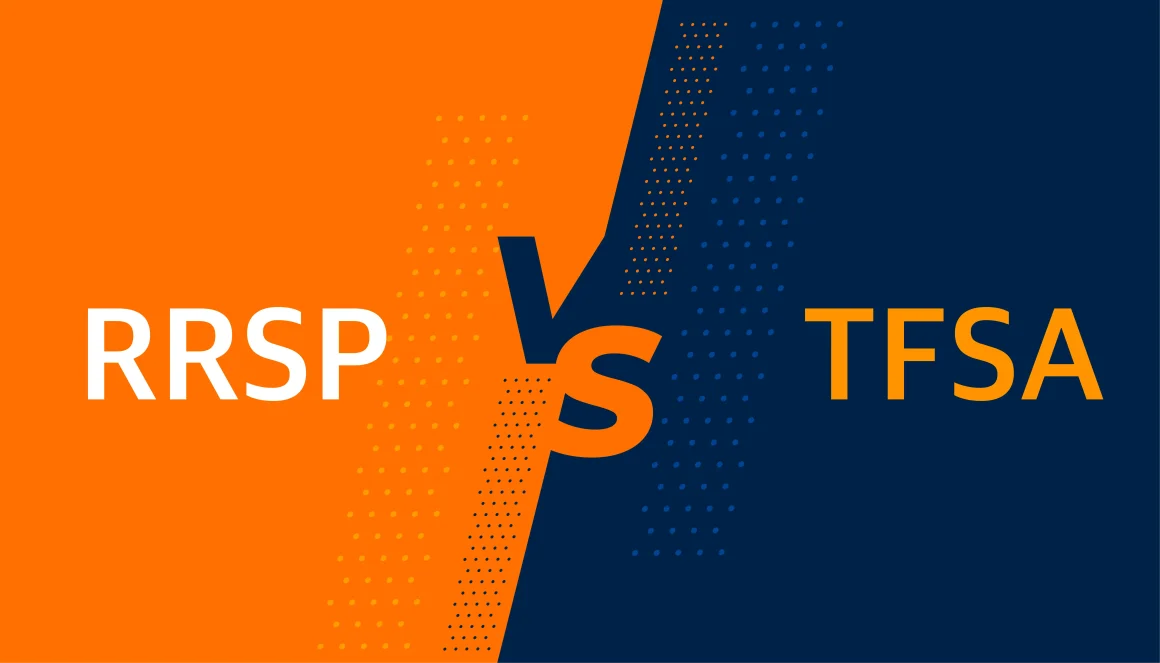With the future being unpredictable, Canadians are wondering whether they should be opening a Tax-Free Savings Account (TFSA) or a Registered Retirement Savings Plan (RRSP) account. The answer to that question depends on several factors, including your age, income and financial goals.
What is an RRSP?
A Registered Retirement Savings Plan (RRSP) is a type of financial account that is registered with the Canadian federal government. It offers tax advantages to individuals who contribute and provides you with a safety net after retirement. In Canada, you can open an RRSP through a financial institution like a bank, credit union, or trust company.
Contributions to an RRSP are deducted from taxable income, which means that if you make $100,000 and contribute $10,000 to your RRSP, you’ll pay tax on $90,000 instead of $100,000. This means that your taxes will be lower in the present year than if you didn’t contribute.
With an RRSP, you don’t have to use 100% of your contribution room each year, but you can’t carry forward unused contributions indefinitely. Any unused contribution room will be lost on December 31 of the year you turn 71 years old when you must close your RRSP and convert it into an income stream (such as an RRIF).
To learn more about RRSPs, checkout our article here.
What is a TFSA account?
The TFSA was introduced in 2009 as a way to help Canadians save money and invest in various assets without having to pay taxes on growth. An individual can contribute up to $6,000 per year to their TFSA account and carry any unused amount to the following year. (Note: Earnings from investments do not affect contribution room)
With a TFSA, the contribution room carries over to the next year if you don’t use it all, but is temporarily lost if you withdraw funds from your TFSA in the current year. For example, if your contribution room for the year 2022 is $6,000 and you contributed $4000, your remaining contribution for the year 2022 will be $2000. However, if you decide to withdraw that $4000 that you contributed, the overall contribution room won’t go back to $6,000 until the year ends.
(Note: withdrawn amounts are added back to your contribution room in the following year.)
To learn more about TFSAs click this link.
TFSA VS RRSP
Primary use
- TFSA. This account is flexible, as money can be withdrawn without penalties. It can be used to build long-term and short-term savings, investments and emergency funds.
- RRSP. An RRSP account was created to help people with retirement and it’s not meant to be withdrawn before its maturity date. For anyone who makes income, it’s a valuable option as it deducts and defers taxes on contributions.
Who is eligible to open?
- TFSA. If you are 18 years of age or older and have a valid SIN number, you can open a TFSA account.
- RRSP. There’s no age limit to opening an RRSP account, as long as you have employment income and filed a tax return.
Contribution limits
- TFSA. The 2022 contribution limit for a TFSA is $6,000. Unused amounts will be carried forward. To learn more about TFSA contributions, click this link.
- RRSP. 2021 RRSP contribution limit is 18% of your earned income reported on your 2020 tax return or $27,830 – whichever is lower, subject to certain adjustments. Unused contributions will be carried forward. To learn more about RRSP contributions, click this link.
Contribution penalties
- TFSA. For overcontribution, you will pay a tax equal to 1% for each month that the excess amount stays in your account.
- RRSP. For excess contributions exceeding the RRSP deduction limit by $2,000, you will have to pay 1% tax every month for that excess.
Spousal Plan
- TFSA. There are no spousal TFSAs.
- RRSP. You can contribute towards your spousal RRSP if they are younger than 71 years of age.
Withdrawals
- TFSA. Withdrawals can be made at any time and are tax-free.
- RRSP. The account needs to mature (when you are 71 years of age) before withdrawals are made. In addition, withdrawals are also taxable.
Key points
- The main benefit of the TFSA over the RRSP is that you don’t have to pay taxes on income earned in the account – not even on earnings from interest or dividends. On the other hand, withdrawals from an RRSP are taxable at your marginal rate.
- An RRSP is designed to help people save for retirement, it’s designed to deduct and defer taxes when a contribution is made.
- A TFSA is better suited for those who have little or no taxable income, but most people usually utilize both accounts.
- An RRSP is beneficial if you have income because of its significant tax deductions. The downside is, money is not easily accessible if you haven’t turned 71.
- A TFSA enables you to earn investment income, such as interest, dividends and capital gains, that is not taxed and can be withdrawn at any time.
- An RRSP allows your investments to grow tax-free within the plan but you pay tax when you withdraw funds.
Which account should you open?
Most people utilize both accounts. If you’ve maxed out your RRSP contribution for the year, it would be wise to also take advantage of the tax-free benefits of a TFSA account. A TFSA account also allows you to withdraw money anytime without restrictions. This comes in handy during emergencies.
For anyone who is employed (especially people with higher income), an RRSP will lower your income tax by the amount you contribute. Not only will you be preparing for retirement, but you may receive a tax refund every time you make an RRSP contribution. The refund can be as much as 50% of every dollar contributed, depending on your personal tax rate.















